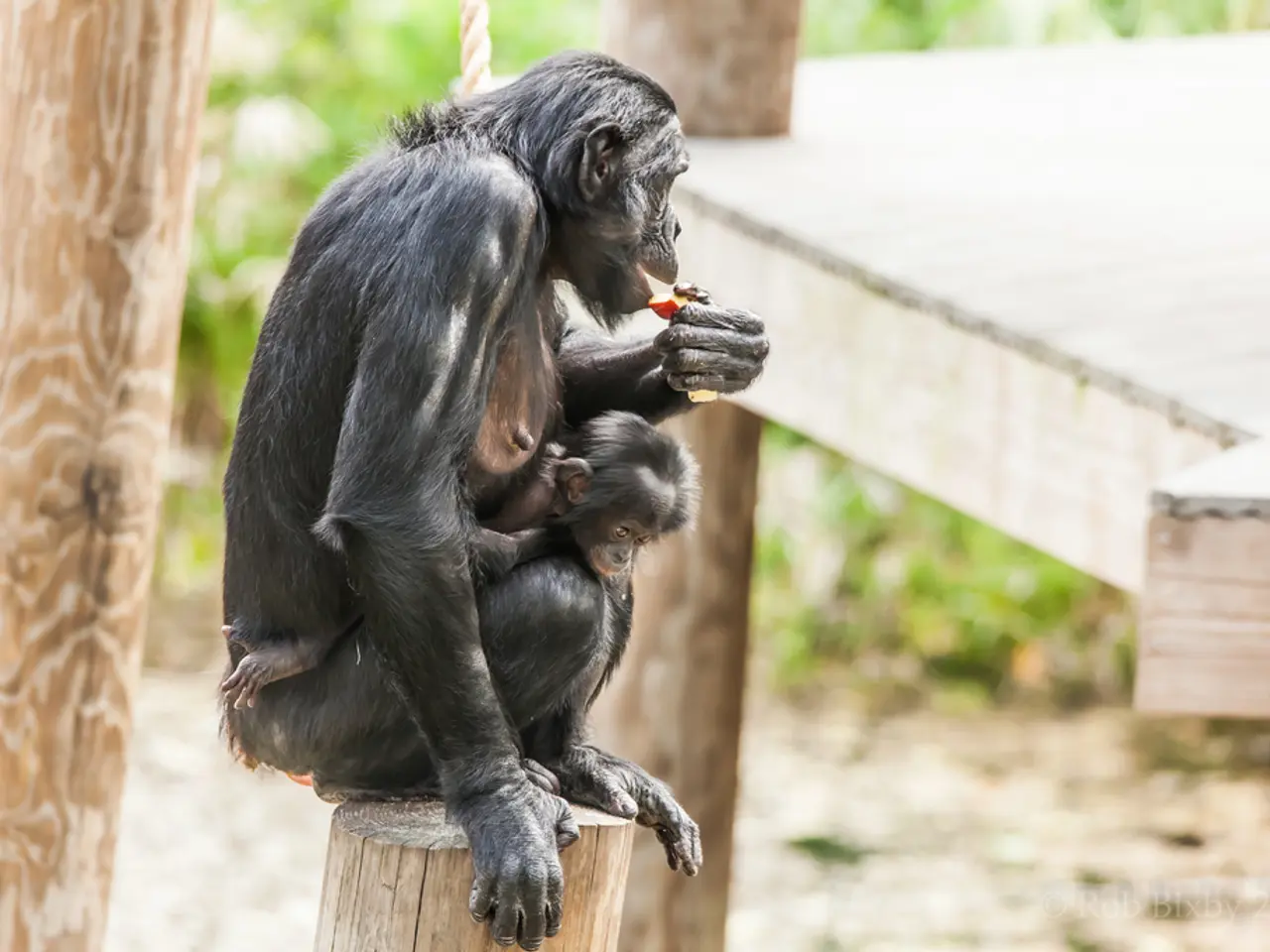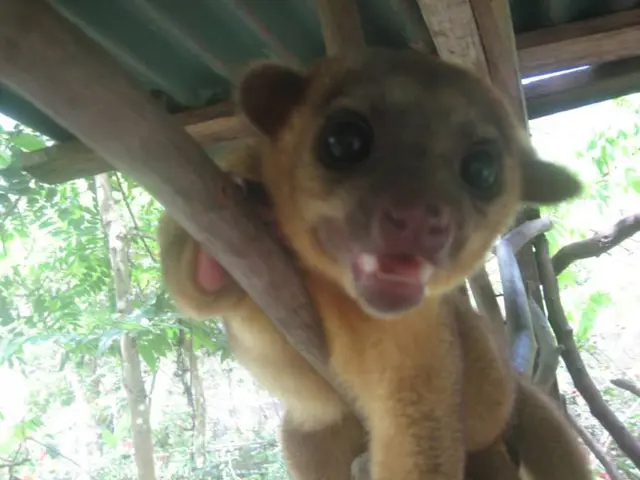Throngs Gather at Rio Zoo for Sketched Simian Showcase
Artistic Chimpanzee Stirs Debate on Animal Creativity and Rights
In a captivating turn of events, Jimmy, a 27-year-old chimpanzee from the Niteroi Zoo in Brazil, has begun creating art that is challenging our understanding of artistic expression in non-human animals. Since his artistic journey started three weeks before his first exhibition in December 2024, Jimmy has been producing paintings spontaneously, gaining attention and inspiring critical thought about the lives of animals in captivity.
Jimmy's story is being covered by various news outlets, focusing on animal art initiatives. His artwork, described as surprisingly lovely, features a vibrant mix of colors and shapes that challenge traditional notions of art as uniquely human. This chimpanzee's artistic endeavors have fueled debates on animal cognition, creativity, and rights, arguing that recognizing animals as capable of artistic expression challenges human exceptionalism and promotes deeper ethical considerations of animal welfare and treatment.
Historically, artists have been inspired by animals, significantly influencing art. English painter George Stubbs, for example, specialized in detailed portraits of animals like horses, lions, and kangaroos, contributing significantly to naturalistic animal depiction in art. In the 20th century, artists like Joan Miró engaged with animals symbolically, as in Dog Barking at the Moon (1926), where animal figures are surrealistic and abstracted, blending human and animal forms to explore unconscious experience.
Famous modern artists who incorporated animals directly or indirectly include Pablo Picasso, Frida Kahlo, and Andy Warhol. Picasso featured his dachshund Lump in several works, reflecting how animal companions influenced artistic style and subject. Kahlo kept parrots, monkeys, dogs, and deer, with these animals holding equal symbolic weight to humans in her paintings. Warhol incorporated cats and endangered species into his pop art, merging animal imagery with contemporary culture and raising awareness about animals through art.
This tradition extends to Indian modernists like M.F. Husain, whose symbolic horse paintings express themes of power and freedom. Jimmy is part of this lineage of animal artists, with notable examples being Brittany, an African elephant, and Congo, a chimpanzee from the 1950s. Three abstract paintings by Congo sold for approximately £17,000 at a 2005 auction in London.
Plans for an exhibition of Jimmy's paintings are underway, aiming to highlight animal intelligence and creativity. The upcoming exhibition is expected to draw significant crowds due to Jimmy's media attention. Animal welfare organizations are advocating for Jimmy's transfer to a sanctuary, raising questions about animal captivity and the ethical implications of keeping intelligent species in zoos.
As Jimmy spends at least 30 minutes a day painting, his artistic journey continues to challenge our perceptions of art and creativity in non-human animals, provoking vital conversations in animal rights by suggesting that animals can be agents of creativity, deserving respect beyond their role as subjects or symbols. This dual influence highlights the evolving understanding of animals in culture and ethics.
- As the debut of Jimmy's artworks approaches, discussions about animal creativity and rights are being amplified on various platforms of social media, igniting a global conversation on the ethical treatment of intelligent species.
- To expand its offerings beyond its usual categories of home-and-garden, books, education-and-self-development, and entertainment, an online learning platform could consider adding a section dedicated to animal art initiatives, potentially including Jimmy's story as a featured course.
- Future researchers and art historians might delve into the works of Jimmy and other animal artists, like Congo and Brittany, as they explore the role of art in challenging human exceptionalism and promoting deeper ethical considerations for animals.




